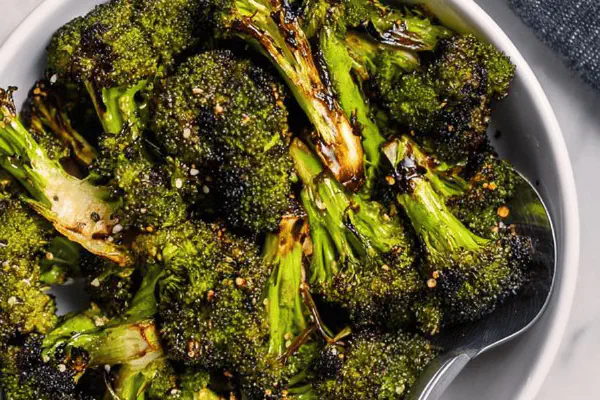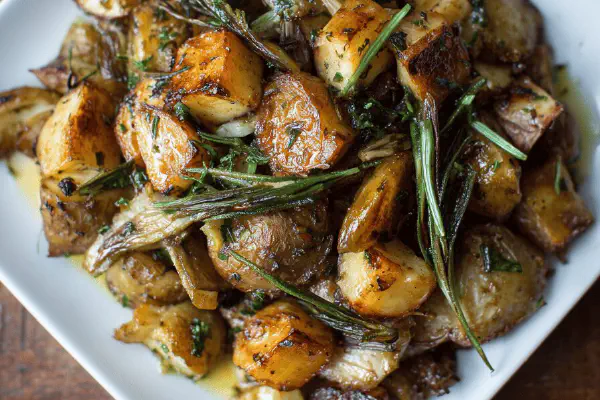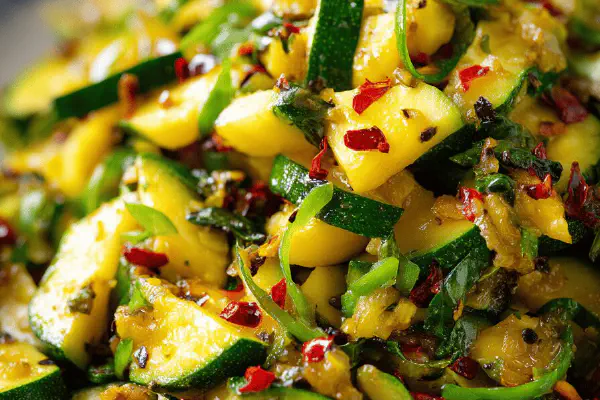Orange-Glazed Beet Cubes

By Emma
Certified Culinary Professional
Ingredients
- 900 g whole beets approximately 2 lbs
- 3 medium shallots thinly sliced
- 1 clove garlic minced
- 25 ml extra virgin olive oil about 1 ¾ tablespoons
- Salt coarse sea salt to taste
- Freshly cracked black pepper
- Zest and juice of 1 medium grapefruit
- 20 ml chopped fresh basil about 1 ½ tablespoons
- 10 ml fresh thyme leaves about 2 teaspoons
About the ingredients
Method
Preparation
- Start with beets whole—don’t stab or pierce. Rinse under cold to remove dirt but skin intact. Place in wide pot with cold water just covering.
- Bring water to a rolling simmer not full boil—too harsh can crack beets. Simmer 1 to 1 ¼ hours depending on size. Check with skewer, should slide in like warm butter. Dark liquid stains hands; gloves handy.
- Drain beets into colander, pour cold water over them to cool quickly. Slipping skin with fingers or using a small knife loosen skins carefully. Leave blemishes; they mostly unnoticeable.
- Cut peeled beets into 1.5 cm dice, uniform sizes for even glazing later.
Cooking
- Heat olive oil in a sauté pan over medium. Gentle sizzle only; destroy garlic and shallots if too hot—slow and steady here.
- Add sliced shallots and minced garlic, stir frequently, cook 3–4 minutes til soft and fragrant but no browning. Butter browns too fast; oil safer here.
- Add fresh thyme leaves, stir 30 seconds just to release aroma.
- Pour in grapefruit juice and zest immediately. Expect a lively citrus scent. Bubble and reduce over medium heat, stirring occasionally until syrupy, about 6 minutes. Watch closely: too thick burns sugar, too runny misses glaze effect.
- Add seasoned beet cubes to pan. Fold gently so cubes absorb citrus reduction without breaking.
- Warm through carefully, about 4 minutes, maintaining glossy coat. Taste for salt and pepper; acidity softens when hot.
- Remove off heat, sprinkle chopped basil over top. Basil adds surprising freshness and herbal lift; red pepper flakes optional for heat.
Serving & Tips
- Serve warm or near room temperature. Visual contrast of red beets with green basil and orange zest is a quick plating win.
- If grapefruit not available, use fresh orange or tangerine but adjust quantity, sweeter juice needs less reduction time.
- Too dry? Splash water or broth cautiously to loosen glaze.
- Avoid overcooking beets or they become mush. The key: firm bite, not raw crunch.
- Leftovers? They keep well chilled. Reheat gently to preserve texture.
Cooking tips
Chef's notes
- 💡 Simmer whole beets gently. Boiling bubbles can crack skins and leak beet juice everywhere. Watch water so it’s barely moving. Test doneness with skewer. Should slide in easy, feel warm and tender, not mushy. Dark water staining hands? Gloves next time. Cool under running water fast to shock cooking and peel easier. Use knife edge carefully or fingers; skins slip off better after chilled.
- 💡 Heat olive oil medium low; if too hot garlic and shallots brown quick, throw off flavor. Stir often but gently, no scorching. Soft translucent is goal. Add thyme leaves last in sauté for short time, 30 seconds max, to wake aromas without bitterness. Then immediately add grapefruit juice and zest to avoid burnt herbs. Watch bubbles size and thickness—too thick burns, too thin misses glaze effect.
- 💡 Cut beets cubes uniform 1.5 cm roughly. Size matters for even glazing and heat through. Fold gently when coating with reduction; don’t break cubes or mush forms. Glaze should cling, glossy coat on beets. Taste hot; acidity will soften, so salt after warming through. Basil chopped fresh and added off heat really pops flavor. Consider red pepper flakes if you want a subtle kick at end.
- 💡 Can swap grapefruit for fresh orange or tangerine juice, adjust cooking time less because sweeter juice reduces faster. If glaze too thick, add splash cold water or broth cautiously to loosen. Overcooked beets mush and lose structure, so watch simmer time carefully. Cool quickly after cooking to keep firmness. Leftovers chill well, reheat gently to preserve texture. Don’t blast heat or texture suffers.
- 💡 Peeling tip: snap beet tips off, rub skin roughly under cold running water; skins loosen fast with slight pressure. Use small knife if stubborn spots. Avoid peeling all brown patches unless ugly; they mostly vanish in cooking. Shallots better than onion choice because bright yet subtle sweetness. Garlic minimal, don’t overpower. Thyme can be frozen pre-chopped but fresh definitely better. Olive oil better than butter here to avoid fast browning and flavor loss.
Common questions
How long to simmer beets?
Depends on size. Usually 1 to 1¼ hours. Check with skewer. Should slide in warm butter–tender but not mushy. Too fast means tough inside; too long means soft mush. Watch slow bubbles, not rolling boil which cracks skins and leaks juice.
What if I don’t have grapefruit?
Use fresh orange or tangerine juice but reduce less time. Sweeter juice needs shorter simmer to syrupy. Can add splash lemon juice to add brightness if needed. Adjust glaze thickness by eye; no strict timing.
How to fix too thick or dry glaze?
Add splash cold water or broth slow but carefully. Too thick burns easily and tastes bitter. Thin glaze doesn’t coat well. Watch bubbles and viscosity; it should lightly coat spoon and shimmer. Keep stirring to prevent burning.
Can leftovers be stored?
Yes, chill in airtight container. Use within 3-4 days. Reheat gently on low heat, stir to keep cubes separate. Avoid microwave high heat that mushes. Leftover glaze can be reused as dressing or glaze for other roasted veggies.



